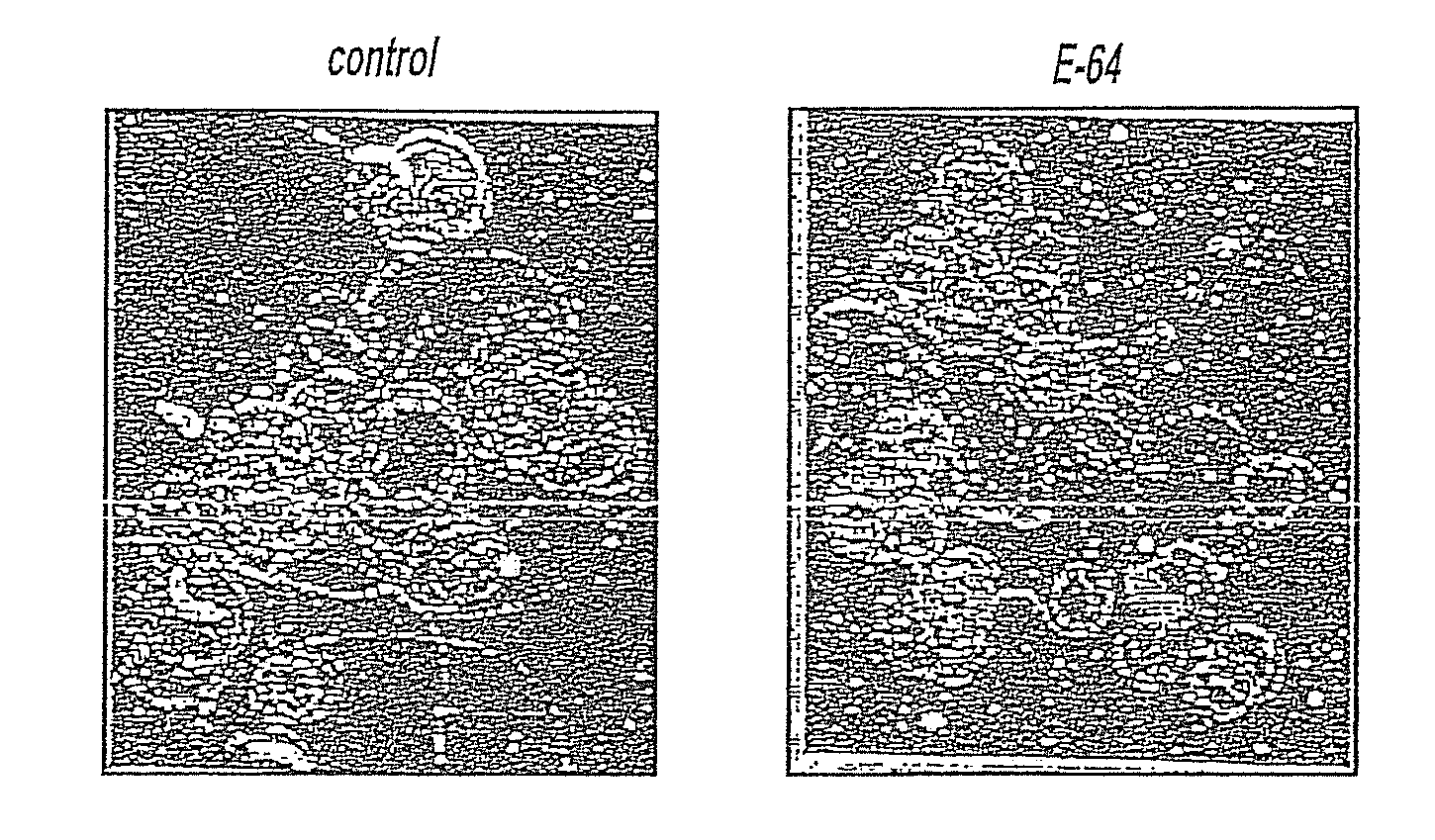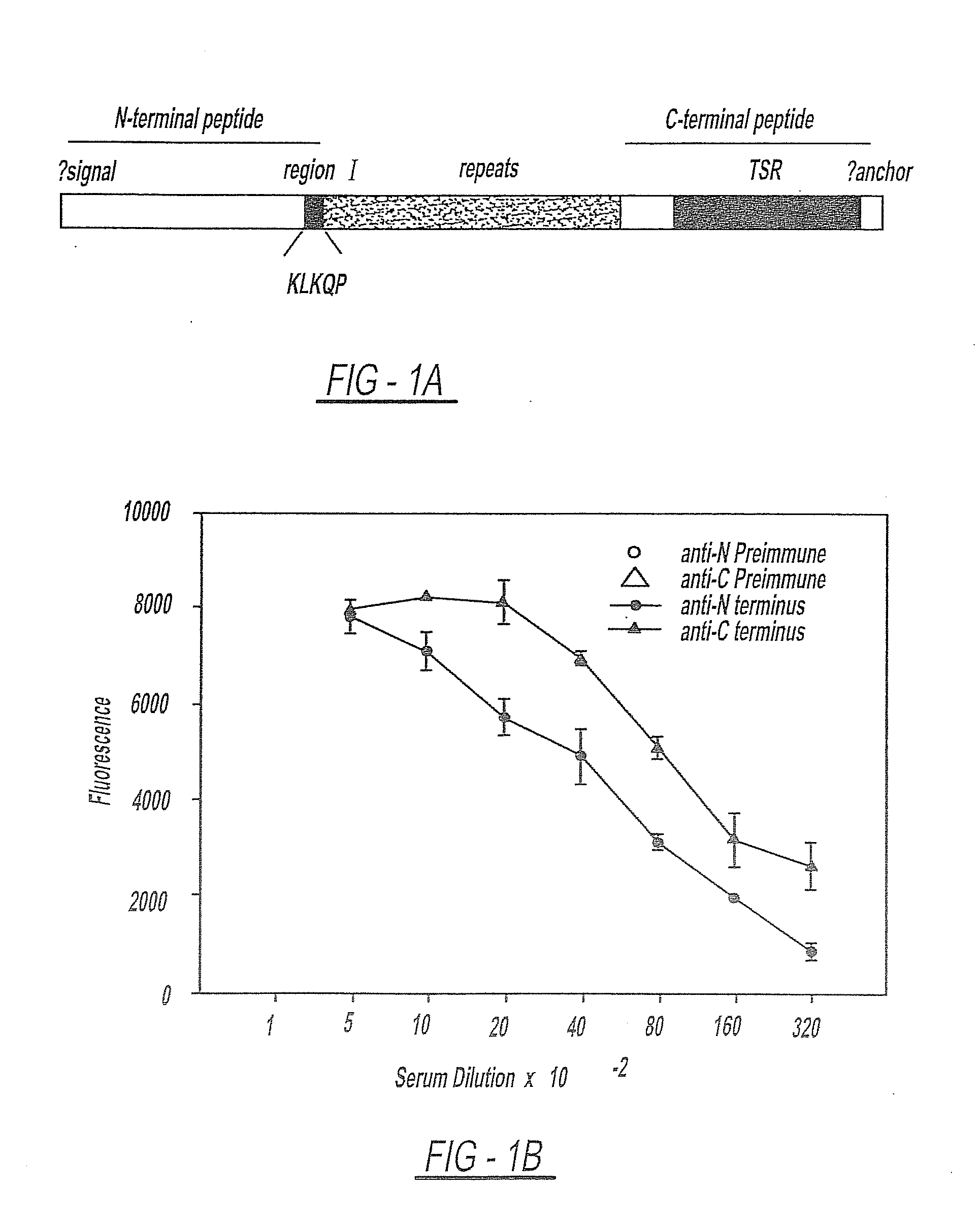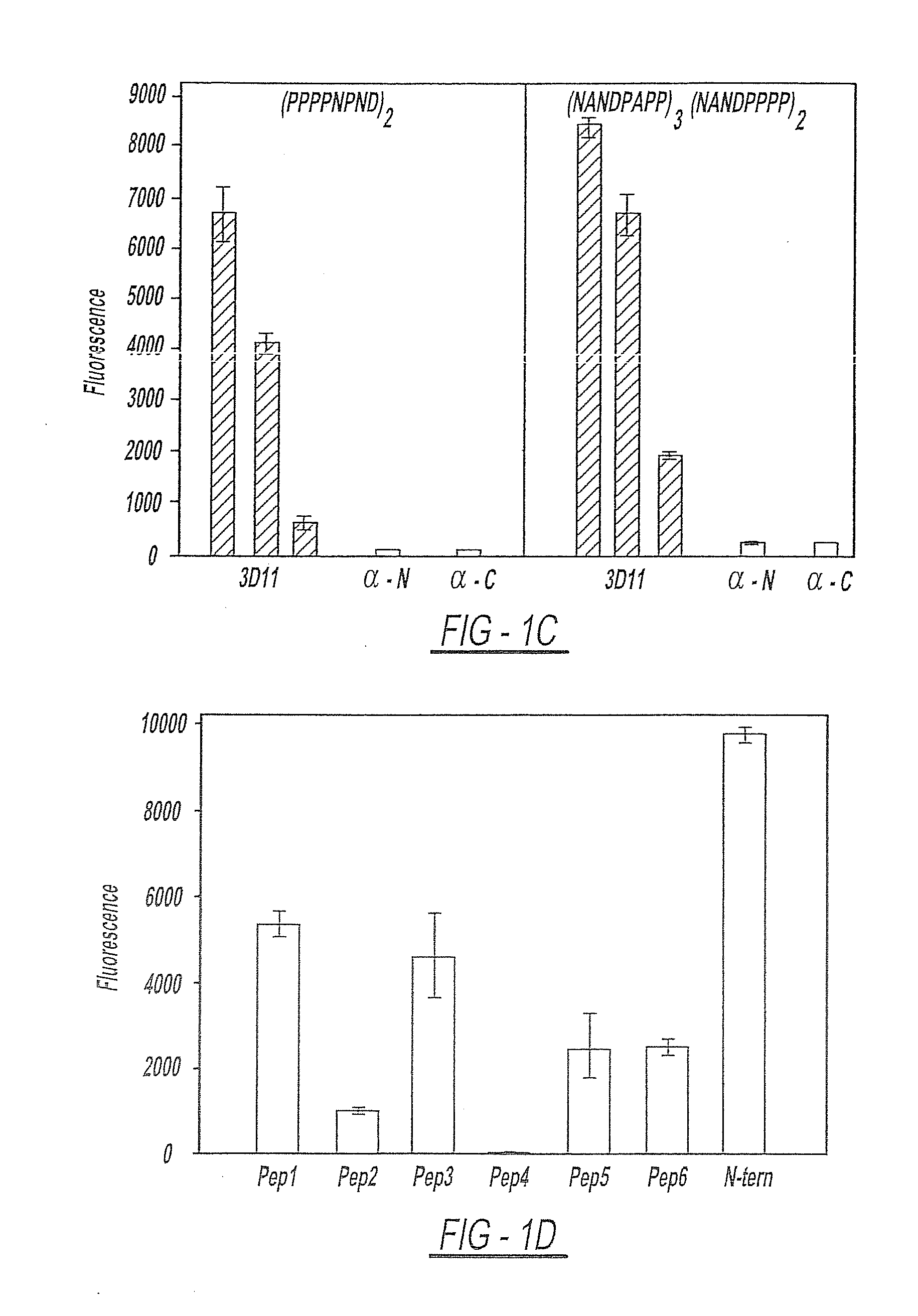Methods and compositions for malaria prophylaxis
a malaria infection and composition technology, applied in the field of compositions and methods for malaria infection prophylaxis and treatment, can solve the problems of increasing the incidence of malaria, increasing the amount of morbidity, and fewer drugs for both treatment and prophylaxis, so as to prevent cleavage of csp, reduce the amount of antibodies or sterics, and prevent malarial infection
- Summary
- Abstract
- Description
- Claims
- Application Information
AI Technical Summary
Benefits of technology
Problems solved by technology
Method used
Image
Examples
example 1
The N-Terminal Portion of CSP is Proteolytically Cleaved by a Cysteine Protease
[0160]As shown in FIG. 1, Panel A represents that CSPs from all species of Plasmodium have the same overall structure. There is a central species-specific repeat region (grey box) and two conserved stretches of amino acids (black boxes); a 5 amino acid sequence called region I and a cell-adhesive sequence with similarity to the type I thrombospondin repeat (TSR; (Goundis, D., et al.)). The first 20 residues of CSP have the features of a eukaryotic signal sequence (Nielsen, H., et al.) and the C-terminal sequence can contain an attachment site for a lipid anchor (Moran, P., et al.). Bars show the location of peptides used for the generation of antisera. For Panels B-E, they illustrate that rabbits were immunized with the long N-terminal or C-terminal peptides and sera were tested for specificity by ELISA. All points were performed in triplicate and shown are the means with standard deviations. Specifically...
example 2
CSP Cleavage Occurs Extracellularly by a Sporozoite Protease
[0168]FIG. 3 illustrates that CSP is processed extracellularly by a parasite protease. As set forth in FIG. 3, Panel A shows that live sporozoites were incubated with the N-terminal antiserum followed by anti-rabbit Ig conjugated to FITC. Phase contrast (left) and fluorescence (center and right) views are shown (Bar=10 mm). Panels B & C show that P. berghei sporozoites expressing GFP were biotinylated, lysed, and CSP (panel B) and GFP (panel C) were immunoprecipitated from the lysate. A western blot of the immunoprecipitated material was probed with streptavidin (lane 1 of panels B & C), mAb 3D11 (lane 2, panel B) or polyclonal antisera to GFP (lane 2, panel C). Panel D shows P. berghei sporozoites were metabolically labeled, washed, and kept on ice (Time=0) or chased at 28° C. for one hour (Time=1). Samples were then resuspended in medium containing pronase (+) or pronase plus pronase inhibitor cocktail (−). After one hour...
example 3
CSP Cleavage is Required for Cell Invasion
[0171]Proteolytic cleavage of cell surface and secreted proteins occurs during invasion of erythrocytes by the merozoite stage of Plasmodium (Blackman, et al. (2000). To determine whether CSP cleavage was required for sporozoite entry into cells, a variety of protease inhibitors were tested for their ability to inhibit sporozoite invasion of a hepatocyte cell line.
[0172]As set forth in FIG. 4, E-64 inhibits sporozoite invasion of, but not attachment to, cells. In Panel A of FIG. 4, the effect of protease inhibitors on invasion by Plasmodium sporozoites was shown. P. berghei (grey bars), P. yoelii (white bar) or P. falciparum (black bar) sporozoites were preincubated with the indicated protease inhibitors, added to cells and after one hour, the cells were washed, fixed and stained so that intracellular and extracellular sporozoites could be distinguished. A control (hatched bar) was performed in which the target cells were preincubated with E...
PUM
| Property | Measurement | Unit |
|---|---|---|
| time | aaaaa | aaaaa |
| volume | aaaaa | aaaaa |
| concentration | aaaaa | aaaaa |
Abstract
Description
Claims
Application Information
 Login to View More
Login to View More - R&D
- Intellectual Property
- Life Sciences
- Materials
- Tech Scout
- Unparalleled Data Quality
- Higher Quality Content
- 60% Fewer Hallucinations
Browse by: Latest US Patents, China's latest patents, Technical Efficacy Thesaurus, Application Domain, Technology Topic, Popular Technical Reports.
© 2025 PatSnap. All rights reserved.Legal|Privacy policy|Modern Slavery Act Transparency Statement|Sitemap|About US| Contact US: help@patsnap.com



